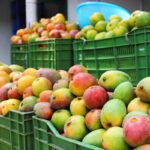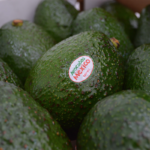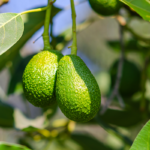Mixed picture for North American watermelon supply in 2017

Early watermelon crops in the two largest U.S. production states have coincided with Mexican volumes tailing off sooner than normal this year and a sluggish start to the California deal. 
Figures provided by the National Watermelon Promotion Board show volumes from Florida over the last month were 22 million pounds higher than the five-year average, representing a 7% rise. Meanwhile, Texas production is up a whopping 85 million pounds, or 130%.
Despite Mexico's volumes being 6% up to date in 2017, over the last month and week they have been down 16% and 27% respectively.
In addition, the California deal is currently a significant 71% down year-to-date.
"Florida got off to an early start and that saw a lot of tremendous volume early, but it was more early than exaggerated and it doesn't look like an extension of the window in any way," the group's industry affairs associate Jason Hanselman told Fresh Fruit Portal.
He said the situation was similar in Texas, which had a "very early, strong crop."
"If you look at the numbers on the calendar year, Texas is up about 130% from what they normally do to this point, and then over the last 30 days they’re still up 120% and over the last week up nearly 50%.
"So that is something that is prolonging as we go, and it comes at a good time because after a tremendous proliferation of watermelon out of Mexico during the early winter months, we have seen some tail-off over the last month or so."
Data from the Agricultural Marketing Service (AMS) shows Mexico has shipped around 900 million pounds of the fruit to the U.S. this year, compared to about 850 million pounds by this time last year.
"They're up about 6% on the year, but if you look at the last 30 days they're down about 16% on what we get from Mexico traditionally, and then over the last week they're down about 27%," Hanselman said.
"It is something that has taken some supply out of the market that we’re used to seeing, so it’s actually been very beneficial that Texas has been able to offset that, otherwise you would be looking at a fairly significant shortage on the market."
Looking further west across the U.S., the representative pointed out that while Arizona was currently 12% up for the year to date, California was only now getting close to the 10 million pound mark, whereas the five-year average figure was more than three-fold higher.
"It's been a very productive spring for Arizona, but then California goes the other way in the face of the rain they finally got. Unfortunately it looks like that has delayed their production schedule," he said.
"And whereas for Florida there is a leftward shift, I don't know that California has the same rightward shift where they can just get the similar production but a bit later in the season, because their growing season is already so long."
The Florida deal may start wrapping up in the next few weeks, Hanselman added, but the Texas season runs much further into the year.
Low prices at start of 2017
As for U.S. market prices, Hanselman noted that somewhat of an oversupply situation in general had put pressure on prices in late 2016, but the situation had now improved.
"Since November there’s been some of the lowest FOB [Freight On Board] pricing that we’ve seen in recent years, so that’s been something that’s kind of carried over into the season," he said.
"When you see an early crop come on sometimes your eyes might light up, but this year the market wasn’t really great for it, or at least not as good as it could have been."
He noted there had also been a "tremendous pick-up" over the last couple of years in volumes from Honduras and Guatemala, which were up 71% and 23% year-to-date.
A particularly cold winter in many parts of the U.S. may have also affected sales prices, but Hanselman noted prices over recent weeks had been stable when there was normally a "pretty steady decline".
"It’s not so much that we’re seeing higher prices necessarily to a month or a week ago, but they’re holding steady in a time of year when prices are typically falling. So that has helped shrink that gap quite a bit in the last few weeks," he said.
He explained there was typically a lull in demand between now and the Fourth of July - the U.S. watermelon industry's biggest peak period for sales, followed by Memorial Day and Labor Day.
"Very soon it’s going to start ramping up again, and really as a commodity our FOB pricing is so tied to supply. It’s really going to hinge on whether supply picks up or not," he said.
"We’ve heard a little bit of speculation that the Georgia crop might be delayed a little bit due to some late frosts, but I never know how much is bluster and how much is real.
"There could potentially be a short supply situation from Florida to Georgia, so that would obviously help lift prices quite a bit once demand starts to pick up again in full stride for the Fourth of July."
Mini and whole fruit sales pick up
Hanselman also noted said there had undoubtedly been an uptick in average per-capita watermelon consumption in the U.S. over recent years, with retail from market research company IRI showing sales in the year up until April 2017 rose 6.5%.
"This growth is driven by the mini and the wholes. The cut category actually fell off about half a percentage point," he said, pointing out that as a rule of thumb the wholes represented 80% of the market, with 10% each for the minis and cuts.
Photo and charts: Courtesy of the National Watermelon Promotion Board















































